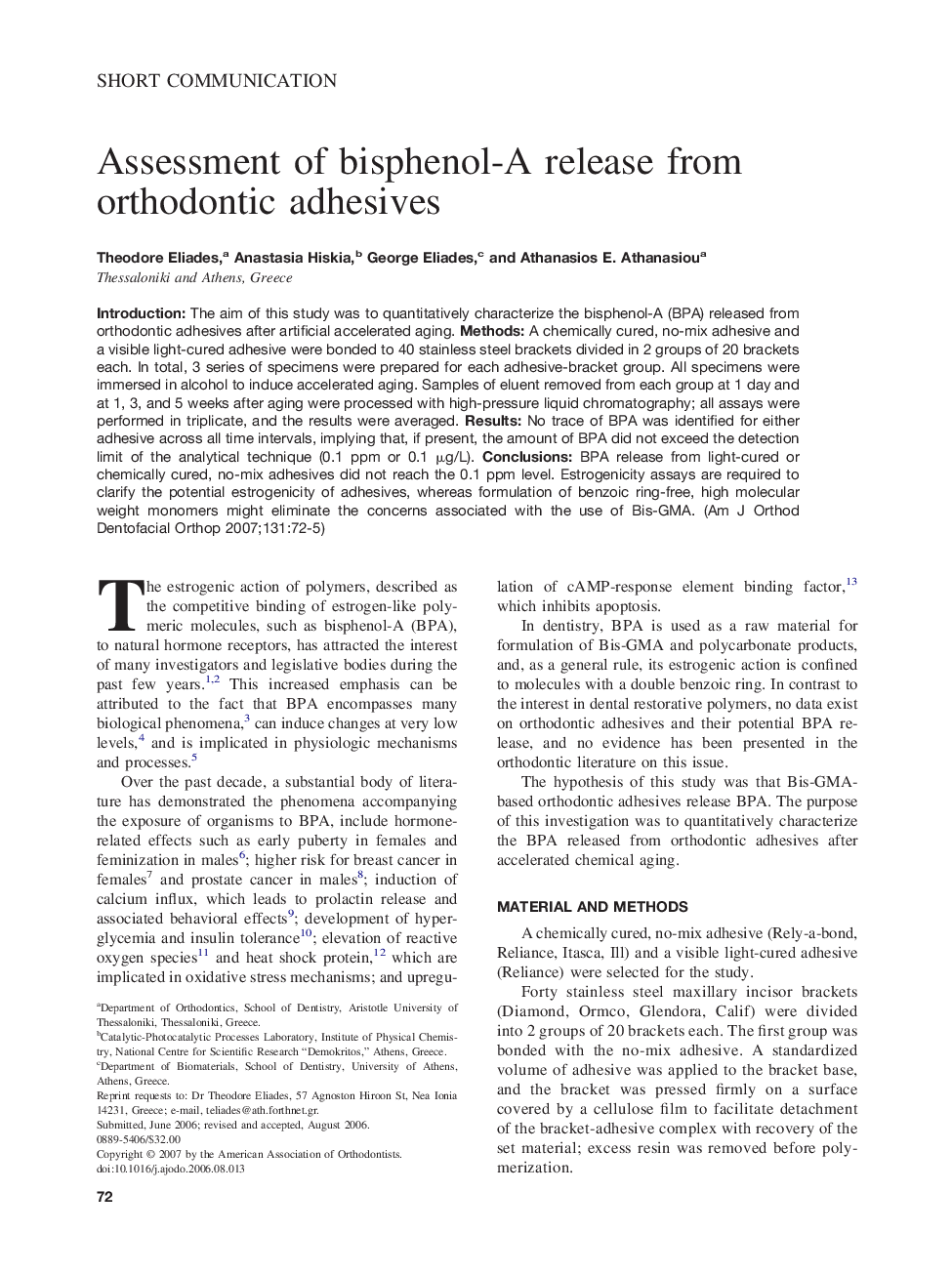| Article ID | Journal | Published Year | Pages | File Type |
|---|---|---|---|---|
| 3120466 | American Journal of Orthodontics and Dentofacial Orthopedics | 2007 | 4 Pages |
Introduction: The aim of this study was to quantitatively characterize the bisphenol-A (BPA) released from orthodontic adhesives after artificial accelerated aging. Methods: A chemically cured, no-mix adhesive and a visible light-cured adhesive were bonded to 40 stainless steel brackets divided in 2 groups of 20 brackets each. In total, 3 series of specimens were prepared for each adhesive-bracket group. All specimens were immersed in alcohol to induce accelerated aging. Samples of eluent removed from each group at 1 day and at 1, 3, and 5 weeks after aging were processed with high-pressure liquid chromatography; all assays were performed in triplicate, and the results were averaged. Results: No trace of BPA was identified for either adhesive across all time intervals, implying that, if present, the amount of BPA did not exceed the detection limit of the analytical technique (0.1 ppm or 0.1 μg/L). Conclusions: BPA release from light-cured or chemically cured, no-mix adhesives did not reach the 0.1 ppm level. Estrogenicity assays are required to clarify the potential estrogenicity of adhesives, whereas formulation of benzoic ring-free, high molecular weight monomers might eliminate the concerns associated with the use of Bis-GMA.
